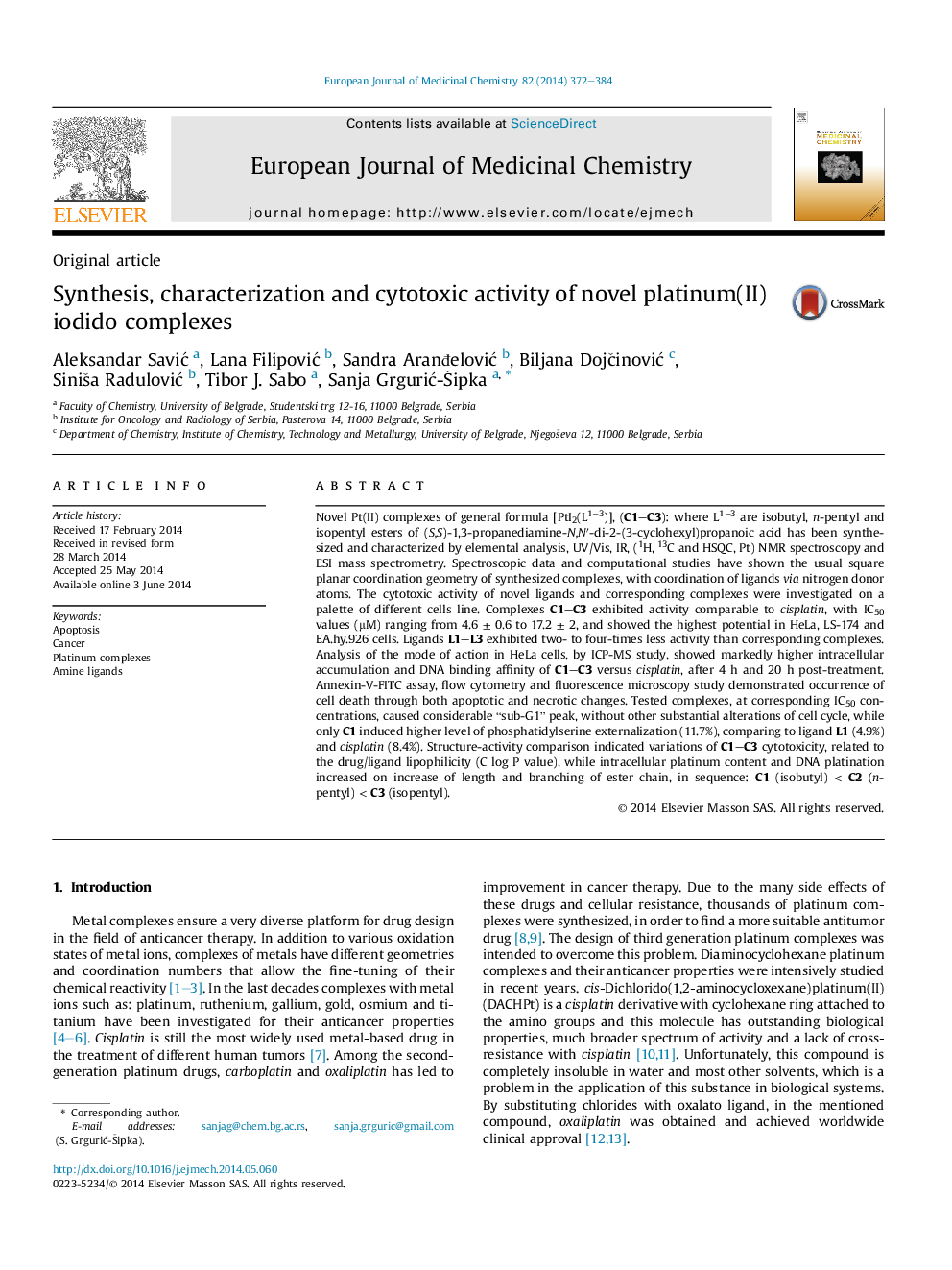| کد مقاله | کد نشریه | سال انتشار | مقاله انگلیسی | نسخه تمام متن |
|---|---|---|---|---|
| 1395745 | 1501134 | 2014 | 13 صفحه PDF | دانلود رایگان |

• New platinum(II)-iodido complexes and ligands have been reported.
• These complexes show strong in vitro cytotoxicity.
• Synthesized complexes induce apoptotic changes.
• ICP-MS study in HeLa cells show intracellular accumulation and DNA binding of these complexes.
Novel Pt(II) complexes of general formula [PtI2(L1−3)], (C1–C3): where L1−3 are isobutyl, n-pentyl and isopentyl esters of (S,S)-1,3-propanediamine-N,N′-di-2-(3-cyclohexyl)propanoic acid has been synthesized and characterized by elemental analysis, UV/Vis, IR, (1H, 13C and HSQC, Pt) NMR spectroscopy and ESI mass spectrometry. Spectroscopic data and computational studies have shown the usual square planar coordination geometry of synthesized complexes, with coordination of ligands via nitrogen donor atoms. The cytotoxic activity of novel ligands and corresponding complexes were investigated on a palette of different cells line. Complexes C1–C3 exhibited activity comparable to cisplatin, with IC50 values (μM) ranging from 4.6 ± 0.6 to 17.2 ± 2, and showed the highest potential in HeLa, LS-174 and EA.hy.926 cells. Ligands L1–L3 exhibited two- to four-times less activity than corresponding complexes. Analysis of the mode of action in HeLa cells, by ICP-MS study, showed markedly higher intracellular accumulation and DNA binding affinity of C1–C3 versus cisplatin, after 4 h and 20 h post-treatment. Annexin-V-FITC assay, flow cytometry and fluorescence microscopy study demonstrated occurrence of cell death through both apoptotic and necrotic changes. Tested complexes, at corresponding IC50 concentrations, caused considerable “sub-G1” peak, without other substantial alterations of cell cycle, while only C1 induced higher level of phosphatidylserine externalization (11.7%), comparing to ligand L1 (4.9%) and cisplatin (8.4%). Structure-activity comparison indicated variations of C1–C3 cytotoxicity, related to the drug/ligand lipophilicity (C log P value), while intracellular platinum content and DNA platination increased on increase of length and branching of ester chain, in sequence: C1 (isobutyl) < C2 (n-pentyl) < C3 (isopentyl).
Figure optionsDownload as PowerPoint slide
Journal: European Journal of Medicinal Chemistry - Volume 82, 23 July 2014, Pages 372–384